#best rehabilitation center in ajman
Text
Fine Motor Skills Activities for Babies: What You Can Do at Home
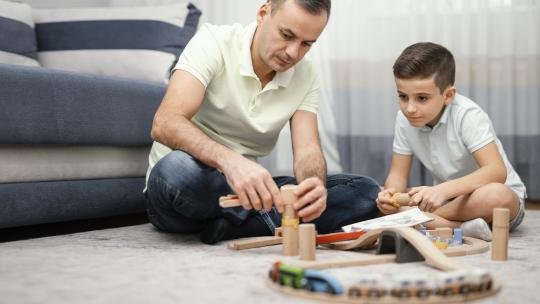
Your baby's development depends on their ability to use their fine motor skills, which allow them to use their little muscles—especially those in their hands and fingers—to accomplish exact motions. These abilities set the stage for more complex tasks like writing, buttoning clothing, and using cutlery. It can be enjoyable and fulfilling to involve your infant in activities that develop fine motor skills. Here are some fun and useful things you can do at home to help your baby develop their fine motor skills.
Tummy Time Play
Your baby's development of fine motor skills is supported by the strength of their core, which is largely built during tummy time. Toys should be placed slightly out of reach to encourage your infant to reach and extend. They get stronger muscles and improved hand-eye coordination from this exercise.
Reaching and Grasping
Expose your infant to a range of textures and shapes of objects. These are great options: teething rings, rattles, and soft balls. Your infant's grip and hand control will improve if you encourage them to reach for and grab these objects.
Stacking and Sorting
To help your baby learn about sizes and sequences, consider using stacking rings, nesting cups, and blocks. By picking up, balancing, and placing objects with their hands throughout these exercises, your baby will be able to regulate and exhibit precision.
Finger Painting
Your infant may explore colours and textures while honing their fine motor abilities through finger painting, which is a sensory-rich pastime. Let your baby try making marks on paper by using washable, non-toxic paints. Their finger muscles get stronger, and their coordination improves as a result of this imaginative activity.
Tearing and Crumpling Paper
Give your infant some torn and crumpled scrap paper or old magazines. This easy task is excellent for improving hand dexterity and strength. Keep a watchful eye on them to make sure they don't mouth the paper.
Bead Threading
Putting big beads on a string is a great way for older babies to develop their fine motor skills and hand-eye coordination. When they get more proficient, start with larger beads and work your way down to smaller ones.
Playing with Playdough
When your baby plays with playdough, their hand muscles get stronger, and their dexterity improves as they squeeze, pinch, roll, and flatten. With basic supplies like flour, salt, and water, you can create your own playdough at home.
Button and Zipper Practice
You can start your kid off by showing them how to zip and unzip zippers and button and unbutton huge buttons once they are a little older. They will be able to practise these practical skills on a regular basis and improve their fine motor precision through these fantastic exercises.
Using a Spoon and Fork
Encourage your baby to use a spoon and fork during meal times. Initially, it may be messy, but with practice, they will develop the coordination needed to feed themselves independently.
Interactive Books
Books with flaps, textures, and movable parts can captivate your baby’s interest while also encouraging them to use their fingers to explore. This activity combines the joy of reading with fine motor skill practice.
The Importance of Professional Guidance
While these activities are beneficial, some babies may need additional support to develop their fine motor skills effectively. If you notice that your baby is struggling significantly with these tasks, it might be helpful to consult a specialist. For instance, seeking advice from professionals specialising in occupational therapy in Ajman can provide tailored strategies to support your baby’s development.
#rehabilitation center dubai#best rehabilitation center in dubai#best speech therapy center in ras al khaimah#best rehabilitation center in ajman
0 notes
Text
kottakkal ayurvedic centre
Providing best ayurveda treatment for Back Pain, After Delivery Care, Stroke Rehabilitation, Skin Care, Hair Care, Weight Loss, etc. Experience authentic ayurveda therapies like Abhyangam, Elakizhi, Pizhichil, Njavarakizhi, Shirodhara, Sirovasthi, Kativasthi, Nasyam, Rejuvenation for healthy life, Rasayana Chikitsa, etc.Our aim is to provide physical, mental, and spiritual healthcare for stress and strains-filled modern lifestyles.Kottakkal Ayurvedic Center Branches Are Deira, Satwa and Ajman. Book Your Appointment Now.
Facebook
Instagram
#ayurveda#ayurveda treatment#ayurvedic massage#kottakkal ayurveda#ajman#dubai#ayurvedic treatment#ayurvedic clinic#ayurvedic#deira
0 notes
Text
Occupational therapist in ajman - lifeway
Empowering Lives: Occupational Therapist in Ajman at Lifeway Rehabilitation Center
Introduction:
Occupational therapy is a crucial field of healthcare that focuses on helping individuals regain their independence and improve their overall quality of life. In Ajman, the bustling city known for its vibrant culture and growing population, Lifeway Rehabilitation Center stands as a beacon of hope for those seeking specialized care and expert guidance. This blog explores the invaluable role of an occupational therapist in Ajman, with a spotlight on the exceptional services provided by Lifeway Rehabilitation Center, recognized as the best rehabilitation center in Ajman.
Understanding Occupational Therapy:
Occupational therapy is a holistic approach to healthcare that assists individuals in developing or regaining skills necessary for daily living and meaningful participation in activities. Occupational therapists are highly trained professionals who work closely with patients, helping them overcome physical, mental, and emotional barriers that may limit their ability to engage in everyday tasks. By assessing individual needs and crafting personalized treatment plans, these dedicated therapists empower patients to maximize their potential and achieve a higher level of independence.
Occupational Therapist in Ajman: Enhancing Lives:
Ajman boasts a thriving healthcare sector, and among the prominent players is Lifeway Rehabilitation Center. The center houses a team of skilled occupational therapists who provide comprehensive care to patients of all ages, from children to seniors. These therapists specialize in various areas, such as pediatric occupational therapy, geriatric occupational therapy, and rehabilitation for individuals with neurological conditions, musculoskeletal disorders, or mental health challenges.
Lifeway Rehabilitation Center: The Epitome of Excellence:
When it comes to finding the best rehabilitation center in Ajman, Lifeway Rehabilitation Center undoubtedly takes the lead. With a patient-centered approach and a focus on evidence-based practices, they have garnered a stellar reputation in the field of occupational therapy. Their team of occupational therapists in Ajman comprises highly qualified professionals who bring passion and expertise to every session. Whether it's relearning essential life skills, adapting to assistive technologies, or finding innovative solutions to everyday challenges, Lifeway Rehabilitation Center offers comprehensive and compassionate care tailored to individual needs.
How Occupational Therapy Helps:
Occupational therapy addresses a wide range of conditions and situations. Some of the areas where occupational therapy can make a significant impact include:
Rehabilitation after injury or surgery: Occupational therapists play a vital role in facilitating the recovery process by guiding patients through exercises, pain management techniques, and adaptive strategies.
Developmental delays in children: Pediatric occupational therapy focuses on helping children overcome developmental challenges, enhancing their fine motor skills, sensory processing, and social interactions.
Mental health and well-being: Occupational therapy offers valuable support for individuals struggling with mental health conditions, helping them develop coping mechanisms, enhance their self-esteem, and establish a sense of purpose through engaging activities.
Conclusion:
Occupational therapists in Ajman, particularly at Lifeway Rehabilitation Center, are transforming lives by enabling individuals to regain their independence and lead fulfilling lives. As the best rehabilitation center in Ajman, Lifeway Rehabilitation Center stands out for its exceptional services, dedicated professionals, and patient-centric approach. Whether you or your loved one requires assistance with physical rehabilitation, pediatric developmental challenges, or mental health support, Lifeway Rehabilitation Center's team of occupational therapists in Ajman is there to guide you towards a brighter, more empowered future.
0 notes
Text
Exploring the Connection Between ADHD and Learning Difficulties
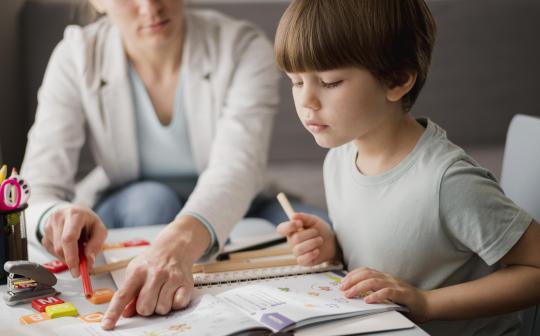
Learning is one of the many areas of life that people with attention-deficit/hyperactivity disorder (ADHD) struggle with. Many individuals with ADHD struggle academically, frequently having issues with focus, organisation, and impulse control. These difficulties might take many different forms, including subpar academic results, unfinished assignments, or difficulty adhering to directions. In order to provide appropriate assistance and interventions, it is imperative to comprehend the complex interaction that exists between learning challenges and ADHD.
Attention management is one of the main ways that ADHD hinders learning. People who have ADHD may find it difficult to focus on one thing at a time, which can cause them to become easily distracted and have trouble participating in class activities. Their inability to properly understand concepts and finish assignments may stem from their failure to pay attention to crucial information or instructions. Further impeding learning is impulsivity, a frequent attribute of ADHD that causes people to act quickly without thinking through the consequences, which may result in mistakes or incomplete work.
Furthermore, difficulties with learning may worsen due to the executive function deficiencies linked to ADHD. A group of cognitive processes known as executive functions are in charge of organising, self-regulating, and planning—all of which are critical for success in the classroom. It can be challenging for people with ADHD to successfully manage their academic duties when they struggle with these areas, which can show up as poor time management, forgetfulness, and trouble following through on projects.
It's critical to understand that, despite the fact that ADHD can pose serious learning challenges, a person's intelligence or chances of success are unaffected. Academic success and full potential are achievable for people with ADHD when they receive the appropriate assistance and accommodations. Establishing individualised education plans (IEPs) or accommodations in educational settings—which could involve giving students extra time to study, giving them preferred seats, or allowing them to use assistive technology—is one way to provide help.
Additionally, behavioural therapies and methods can be quite helpful in assisting people with ADHD in managing their symptoms and enhancing their academic performance. Some of these could be giving regular feedback and encouraging reinforcement, teaching self-monitoring strategies, and dividing work into smaller, more manageable pieces. It can also be very helpful to help people with ADHD overcome challenges and achieve academic success if a caring and understanding environment is fostered both at home and at school.
A multidisciplinary strategy combining cooperation between educators, mental health providers, and other experts may be advantageous in some circumstances. For instance, the goal of occupational therapy is to assist people in acquiring the abilities necessary to carry out their daily duties and activities. Occupational therapists can work with ADHD kids in schools to help them become more organised, more adept at managing their time, and more capable of processing sensory information. This will help them succeed academically and make them feel better overall.
Let's sum up by saying that there is a complicated and nuanced relationship between ADHD and learning challenges that calls for thorough knowledge and specialised interventions to properly address. An inclusive learning environment where all students have the chance to thrive can be established by acknowledging the particular difficulties faced by those with ADHD and offering tailored help.
If you're in Ajman and in need of assistance with ADHD or learning challenges, you might want to look into the services provided by occupational therapy in Ajman. Their knowledge and tailored approach can help students overcome challenges and succeed academically.
#rehabilitation center dubai#occupational therapy dubai#rehabilitation center in dubai#speech therapy center in ajman#best rehabilitation center in ajman
0 notes
Text
Supporting Children with CP: Tools for Developing Hand Coordination

Introduction
Children with cerebral palsy (CP) face particular difficulties that impair their coordination and motor abilities. It is our responsibility as educators and carers to provide them with specialised support so they can thrive in spite of these obstacles. Developing hand coordination is a crucial component that has a big impact on their everyday activities and level of independence. We'll look at practical methods and resources in this blog that are intended to help kids with cerebral palsy improve their hand-eye coordination.
Understanding Cerebral Palsy
Let's take a quick look at CP before getting into tactics. These are a set of long-term movement disorders that start to show symptoms in early childhood and impair body movement and muscle coordination. The severity and symptoms of cerebral palsy (CP) might vary, but one typical feature is difficulties with fine motor skills, which makes writing, gripping items, and taking care of oneself difficult.
Importance of Hand Coordination
For a youngster to develop and be able to function, hand coordination is essential. Good hand coordination creates independence and confidence in a person, whether they are doing simple things like buttoning a shirt or more complicated things like drawing or using utensils. Hand coordination issues can have a major positive impact on a child's quality of life and make it easier for them to integrate into different learning environments.
Effective Tools and Techniques
Adaptive Utensils and Tools
Everyday tasks might be easier for kids with cerebral palsy if they use adaptable equipment and utensils. Tongs, pencils, spoons, and scissors with ergonomic handles and need-specific adjustments are among the items specifically made for them. These technologies encourage more independence in daily tasks like eating and writing by lowering the physical effort needed.
Therapeutic Putty and Playdough
A fun and interesting way to improve hand strength and coordination is with therapeutic putty and playdough. Children can enhance their fine motor abilities and experience sensory stimulation by manipulating, stretching, and forming these materials. These exercises are frequently included in therapy sessions by occupational therapists in order to target particular hand movements and increase dexterity.
Hand Exercises and Activities
For children with cerebral palsy, basic hand exercises and activities can make a big difference in hand coordination. Finger tapping, holding and releasing objects of different sizes, and tracing designs or patterns are a few examples of these. Children can improve their motor control and build their hand muscles by completing these exercises on a regular basis.
Assistive Technology
In the current digital era, assistive technology provides a multitude of resources to help children with cerebral palsy enhance their hand-eye coordination. Adaptive keyboards, speech-to-text software, and touchscreen devices with accessibility capabilities can enable individuals to communicate, study, and use technology more independently. In order to successfully treat particular motor problems, occupational therapists in Ajman frequently incorporate assistive technology into their intervention strategies.
Sensory Integration Activities
The goal of sensory integration exercises is to heighten sensory perception and enhance sensory processing, both of which can help children with cerebral palsy with hand coordination. These exercises could be manipulating weighted objects, performing wall push-ups or other proprioceptive exercises, or simply experimenting with various textures and sensory palettes. Children can improve their fine motor abilities and movement coordination by increasing their sensory awareness and modulation.
Conclusion
A comprehensive strategy that incorporates therapy interventions, adapted equipment, and supportive settings is needed to help children with cerebral palsy (CP) improve hand coordination. These youngsters can be empowered to overcome obstacles, improve their independence, and flourish in a variety of areas of life by utilising efficient tools and approaches that are customised to meet their specific needs. The growth and well-being of every child with cerebral palsy (CP) should be given first priority, whether it is through imaginative home-based activities or occupational treatment in Ajman.
#rehabilitation center dubai#occupational therapy dubai#best speech therapy center in ras al khaimah#best rehabilitation center in ajman
0 notes
Text
Sensory Processing Disorder: How to Create a Sensory-Friendly Environment at Home
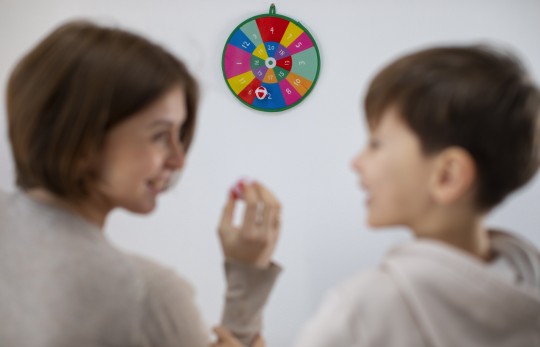
Everyone should be able to find refuge in their house, especially those who are dealing with sensory processing issues, in our busy society. Everyday stimulation can become overwhelming for those with Sensory Processing Disorder (SPD), but with careful modifications, your home can become a comfortable sanctuary that is catered to each person's needs. Here's how to turn your room into a sensory-friendly setting.
Understanding Sensory Needs
It is critical to understand the many ways that diverse sensory inputs impact people. A person with SPD may exhibit a variety of symptoms. For example, some people may be extremely sensitive to noise, while others may find comfort in particular textures. The first step is to acknowledge and assimilate these inclinations.
Create Zones
Set aside particular spaces for various activities in order to reduce sensory overload. A distinct play space allows for more intense activities without overpowering other senses, while a calm section with gentle lighting might be a haven for reading or relaxing.
Lighting
When it comes to sensory experiences, lighting is important. Although natural light tends to be calming, personalised artificial lighting can be created to suit personal tastes. Flexibility can be achieved using dimmer switches or brightening lamps.
Sound Management
An environment with soothing audio can be produced with the aid of sound machines or noise-cancelling headphones. To minimise echoes and absorb sound, think about adding soft furnishings like wall hangings, drapes, or carpets.
Tactile Comfort
Make use of a range of textures in your décor to satisfy varying degrees of sensitivity to touch. Comfort and sensory inquiry are made possible by cosy blankets, plump cushions, and tactile carpets.
Organisational Strategies
Spaces that are neat and well-organised can help soothe the eye by reducing visual clutter. Bins and baskets are examples of storage solutions that minimise sensory distractions while keeping possessions organised.
Sensory Tools and Toys
Present toys and tools for the senses that are intended to induce calm and provide input. Tactile stimulation is provided by weighted blankets, fidget toys, and sensory bins with a variety of materials that can be customised to suit personal tastes.
Calming Colours
Colour choice can significantly impact mood and sensory experiences. Soft, neutral tones like blues, greens, or earthy hues create a serene atmosphere while avoiding overly bright or contrasting colours that may be overwhelming.
Flexibility and Adaptability
As your sensory needs change over time, be prepared to make changes. It's crucial to keep an open mind about your strategy because what works one day might not work the next.
Seek Professional Guidance
If you're not sure how to help someone with SPD at home, think about speaking with experts like occupational therapists. These professionals can offer customised tactics and advice on how to establish the best possible setting for sensory control and wellbeing.
You may create a sensory-friendly sanctuary in your house where people with SPD can flourish by putting these suggestions into practice. Although cultivating a supportive environment is a continuous effort, you can create a place that nurtures and empowers everyone who walks through its doors if you have the patience and commitment to do so.
And for those seeking professional guidance in Ajman, don’t hesitate to reach out to qualified experts in occupational therapy in Ajman. They can provide personalised support and resources to enhance the sensory environment of your home.
#rehabilitation center dubai#best rehabilitation center in dubai#occupational therapy dubai#best rehabilitation center in ajman#speech therapy center in ajman
0 notes
Text
Understanding the Role of Genetics in Intellectual Disabilities
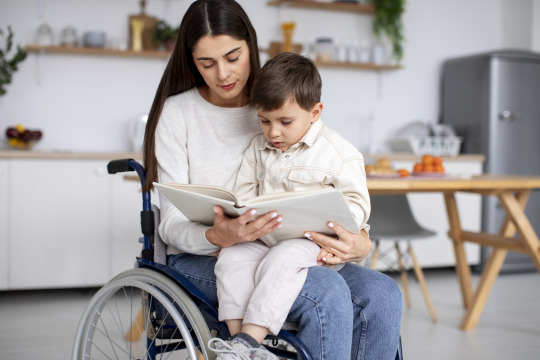
The relationship between heredity and intellectual disability in the context of cognitive capacities has long piqued the interest of scientists and medical professionals. It is essential to comprehend the complex mechanisms behind these disorders in order to develop interventions and support measures that work. Today, we set out to explore the genetic terrain in an effort to clarify the complex nature of intellectual disability.
A major influence on how our cognitive abilities are shaped is genetics. Memory, logic, and problem-solving abilities are among the many cognitive abilities for which our genetic code provides the building blocks from the time of conception. Yet, this delicate process can be upset by changes or mutations in specific genes, which might result in intellectual disability.
Down syndrome, which is brought on by an extra copy of chromosome 21, is one of the most well-known genetic abnormalities linked to intellectual difficulties. This extra genetic material influences how the brain develops, resulting in varied degrees of cognitive deficits. In a similar vein, intellectual difficulties are frequently caused by fragile X syndrome, a genetic disorder marked by a mutation in the FMR1 gene, especially in boys.
The aetiology of intellectual disorders can be better understood by looking at these genetic aberrations; however, the situation is not simple. It can be difficult to diagnose and treat intellectual disorders because they frequently arise from the complex interaction of hereditary and environmental variables. Individualised approaches to care are necessary, as evidenced by the vast range of intellectual capacities present in affected persons, which further complicates issues.
Our capacity to pinpoint the fundamental genetic components of intellectual disability has been completely transformed in recent years by developments in genetic testing methods. With the use of methods like whole-exome sequencing and chromosomal microarray analysis, doctors are now better able to identify the precise genetic variants linked to cognitive diseases.
But a diagnosis is only the beginning of the road. Healthcare practitioners can customise intervention tactics to meet the specific requirements of people with intellectual impairments by using genetic insights. A multidisciplinary strategy is necessary to optimise cognitive development and enhance quality of life, from early intervention programmes to specialised educational curriculum.
As a key element of this all-encompassing strategy, occupational therapy in Ajman gives people with intellectual disabilities the abilities and tools they require to go through everyday life with more independence and self-assurance. Occupational therapists are essential in enabling people to realise their full potential because they provide concentrated therapies aimed at improving individuals' functional abilities and adaptive behaviours.
It is critical to keep in mind that every person is unique and is influenced by a combination of genetic, environmental, and personal factors as we continue to uncover the mysteries surrounding the role of genetics in intellectual disability. We can build a more welcoming and supportive community for people with a range of cognitive capacities by accepting this complexity and encouraging a team approach to care. Together, let's clear the path for a time when everyone can prosper, regardless of their genetic composition.
#rehabilitation center dubai#occupational therapy dubai#rehabilitation center in dubai#speech therapy center in ajman#best rehabilitation center in ajman
0 notes
Text
Fine Motor Development in Premature Babies: Early Intervention
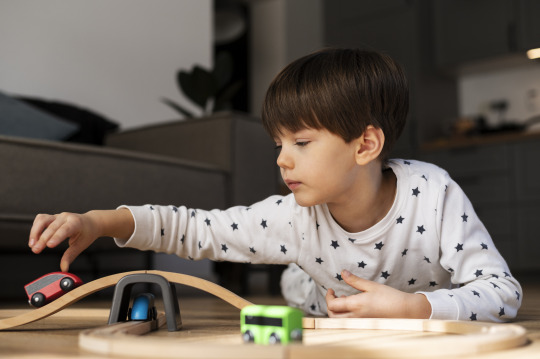
Although every newborn is a marvel, preterm babies may have particular difficulties as they emerge from the womb sooner than anticipated. The development of fine motor skills is one of these most important components. For premature babies, learning to perform exact motions might be a more complex process that calls for close supervision and early assistance.
Coordination of tiny muscles, especially those in the hands and fingers, is necessary for fine motor abilities in order to carry out dexterous activities including gripping, holding, and object manipulation. As infants are born before their brain systems are completely developed, premature birth might impede the development of certain talents, which normally occur over time.
For the purpose of supporting the development of fine motor skills in premature babies, the early days and months of their lives are extremely important. Specialised treatment and interventions can have a big impact on their development during this period. Let's look at some important methods for promoting premature babies fine motor development:
Skin-to-Skin Contact
Holding a baby against a parent's skin, or kangaroo care, has been demonstrated to enhance bonding and increase developmental outcomes, such as fine motor abilities. Premature newborns can benefit from the comfort and general development that come with skin-to-skin contact because of the warmth and closeness it provides.
Gentle Touch and Massage
A premature baby's senses can be stimulated, and their motor responses can be encouraged with delicate massages and touches. Soft strokes are an excellent way for carers to encourage relaxation and circulation while also laying the groundwork for the development of future motor abilities.
Tactile Stimulation
Giving babies a range of textures to explore can improve their sensory experiences and help with the development of their fine motor skills. Engaging their senses and promoting hand-eye coordination can be achieved through basic activities like introducing various fabrics, textured toys, or tactile novels.
Occupational Therapy
In order to enhance premature infants' fine motor development, early intervention by qualified specialists, such as occupational therapists, is essential. Occupational therapists assist in strengthening muscles, enhancing coordination, and treating any developmental delays in babies using specialised techniques and exercises catered to their specific needs.
Encouraging Hand Play
Hand play can help develop fine motor skills in premature newborns even more as they become stronger and become part of regular routines. Their motor development can be aided by actions such as reaching for toys, holding things of different sizes, and using their hands to explore their environment.
Assistive Devices and Adaptive Equipment
In rare circumstances, adaptive equipment or assistive technology may be beneficial for premature infants by fostering the development of their motor abilities. Baby engagement in tasks that could be difficult for them otherwise can be facilitated by this equipment, such as specially made feeding utensils or toys.
Parental Involvement and Education
It is essential to inform parents about the developmental needs of their infant and give them the tools they need to take an active role in their care. Giving parents advice on how to encourage fine motor abilities in their children at home encourages them to take an active role in their child's growth.
The secret to assisting preterm newborns in realising their full potential is early intervention and continued support. We can provide a solid basis for their future growth and development by concentrating on fostering their fine motor abilities from an early age.
Keep in mind that each infant is different and that each child's progress may differ from the next. For premature newborns to successfully acquire fine motor abilities, they need to be raised in a nurturing environment with patience and tenacity. These small hands are capable of amazing things when given the correct attention and assistance.
Therefore, let's work together to nurture the development of preterm newborns and support their success, whether it be through kangaroo care, gentle massages, tactile stimulation, or the knowledge of occupational therapy in Ajman.
#rehabilitation center dubai#occupational therapy dubai#best occupational therapy in sharjah#speech therapy center in ajman#best rehabilitation center in ajman
0 notes
Text
ADHD Medication Myths vs. Facts: Understanding Treatment Options

There are unique difficulties associated with having attention-deficit/hyperactivity disorder (ADHD). People with ADHD frequently look for efficient treatment choices to reduce symptoms and enhance their quality of life. These treatments can address issues with focus, impulsivity, and managing everyday duties. Nonetheless, there are many false beliefs regarding ADHD drugs, which causes uncertainty and reluctance in those who are thinking about receiving treatment. Let's disentangle the truth from the myth so that people with ADHD and those close to them can make wise decisions.
Myth: ADHD Medications Are Addictive
Fact: The possibility of addiction to ADHD drugs is among the most widespread myths about them. While it's true that some ADHD drugs, notably stimulants like Adderall and Ritalin, are classified as Schedule II prohibited narcotics because of the possibility of abuse, there is very little chance of addiction when used as directed by a doctor and under close supervision. Actually, studies show that people with ADHD who take their prescription drugs are less likely to abuse drugs than people with the disorder who don't get treatment.
Myth: ADHD Medications Turn Individuals into Zombies
Fact: The possibility of addiction to ADHD drugs is among the most widespread myths about them. While it's true that some ADHD drugs, notably stimulants like Adderall and Ritalin, are classified as Schedule II prohibited narcotics because of the possibility of abuse, there is very little chance of addiction when used as directed by a doctor and under close supervision. Actually, studies show that people with ADHD who take their prescription drugs are less likely to abuse drugs than people with the disorder who don't get treatment.
Myth: ADHD Can Be Cured with Medication Alone
Fact: Medication is not a panacea for ADHD symptoms, but it can be an effective aid in managing symptoms. Executive functioning, impulse control, and attention are just a few of the domains of functioning that are impacted by the complex neurodevelopmental disease known as ADHD. Therefore, a mix of medication, therapy, and lifestyle changes is frequently used in a comprehensive treatment approach. Individuals can address underlying problems like anxiety or poor self-esteem and learn coping mechanisms with the use of behavioural therapies like dialectical behaviour therapy (DBT) and cognitive-behavioural therapy (CBT). Modest lifestyle adjustments like consistent exercise, a healthy diet, and enough sleep can also be very helpful in controlling the symptoms of ADHD.
Myth: ADHD Medications Are Only for Children
Factual statement: Although ADHD is frequently identified in children, it is a chronic illness that may last until maturity. Indeed, studies indicate that symptoms of ADHD may persist into adulthood for as many as 60% of children diagnosed with the disorder. Thankfully, a number of ADHD drugs, both stimulant and non-stimulant, are authorised for use in adult patients. Medication may be helpful for adults with ADHD who are having trouble controlling their symptoms if it is a part of a thorough treatment plan customised to meet their specific requirements.
In conclusion, when it comes to prescription medications for ADHD, it's important to separate fact from fantasy. Despite the fact that there are a lot of myths and false beliefs about ADHD, being aware of the facts can help people who are affected by the condition and those who care about them make informed treatment decisions. If you or someone you love is exhibiting symptoms of ADHD, don't be hesitant to ask a qualified healthcare expert for guidance and assistance. Remember that there is effective therapy for ADHD and that, with the correct support, those who suffer from the illness may lead happy, fulfilling lives.
For those in need of the best occupational therapy in Ajman, there are a number of clinics and facilities to look into. They provide all-inclusive treatments to help people with ADHD improve their everyday functioning and general well-being.
#rehabilitation center dubai#occupational therapy dubai#best occupational therapy in sharjah#best rehabilitation center in ajman#speech therapy center in ajman
0 notes
Text
The Role of Play Therapy in Helping Children Express Emotions
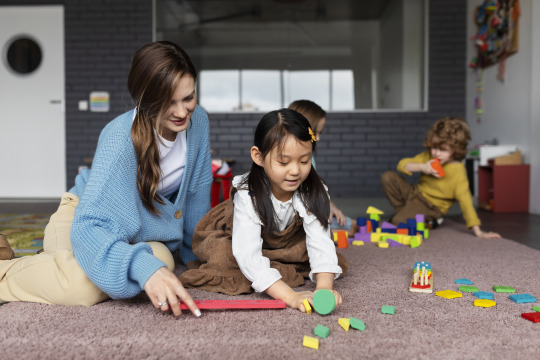
It's not always easy to communicate in the field of child psychology. Youngsters frequently find it difficult to vocally communicate their feelings, which can cause confusion and frustration for both the kid and people around them. Let me introduce you to play therapy, a cutting-edge method that uses play as a language to explore the intricate realm of a child's emotions.
Play therapy is a systematic therapeutic approach led by qualified professionals; it's more than just games and enjoyment. Children are encouraged to express their thoughts, feelings, and experiences in a safe and supportive setting via a variety of activities, including storytelling, painting, and imaginative play.
Play therapy's capacity to get beyond conventional barriers to communication is one of its biggest advantages. Children have the freedom to express themselves freely without being limited to words by using toys, art supplies, and other instruments. Young kids or individuals who have trouble expressing themselves verbally will particularly benefit from this. Through play, kids can project their internal conflicts outside of themselves, which facilitates comprehension and resolution.
In addition, play therapy offers a safe environment in which kids can face challenging feelings. Play therapy is a gentle yet powerful technique for people to explore their emotions, whether they are grief, anxiety, rage, or trauma. Under the close supervision of a licensed therapist, kids can use play to act out problems, investigate other viewpoints, and try out coping mechanisms.
The capacity of play therapy to empower kids, though, may be its most amazing feature. Children develop a sense of mastery and control over their emotions as they make their way through the made-up worlds of play. They acquire vital life skills like empathy and problem-solving, as well as the ability to face obstacles and communicate assertively.
Play therapy provides a glimmer of optimism in the busy city of Ajman, where the bustle may occasionally overwhelm even the smallest citizens. Children can get specialised care that is catered to their individual needs with the best play therapy in Ajman. Play therapy offers a supportive environment for development and healing for those dealing with behavioural problems, family disputes, or developmental difficulties.
To sum up, play therapy is more than just kid's play; it's an effective means of healing and expressing emotions. Children may open the door to a world of emotions and lead healthier, happier lives by learning the language of play. One play session at a time, let's embrace the potential of play therapy and give our kids the tools they need to thrive.
#rehabilitation center dubai#occupational therapy dubai#best speech therapy center in ras al khaimah#best rehabilitation center in ajman#speech therapy center in ajman
0 notes
Text
Navigating Stuttering: Understanding the Role of Speech Therapy
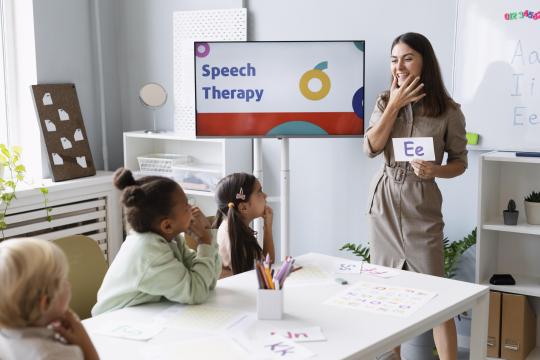
Introduction
Speech disorders like stuttering, which cause disturbances in the natural flow of speech, can have a big effect on a person's confidence and ability to communicate. Nonetheless, those who stammer can learn to properly manage their condition with the correct help and direction. Speech therapy is one of the most useful instruments on this path. In this blog, we'll explore speech therapy's role in stutter management and what patients can anticipate from this therapeutic method.
Understanding Stuttering
It is important to understand the nature of stuttering before diving into the details of speech therapy. More than just sporadic hesitancy or repetition in speaking, stuttering is a complicated condition impacted by a number of variables, such as brain development, heredity, and environment. It might appear in a variety of ways, such as lengthy sounds, syllable repetitions, speech blocks, or abrupt halts in speaking.
The Role of Speech Therapy
When it comes to helping people who stutter become more confident, communicative, and fluent speakers, speech therapy is essential. A licenced speech-language pathologist (SLP) is usually the expert helping people with this procedure. What to anticipate from speech therapy sessions is as follows:
Assessment
The process commences with an extensive assessment carried out by the speech-language pathologist (SLP) to comprehend the person's distinct speech patterns, communication difficulties, and fundamental elements that induce stuttering. Through this examination, the therapy plan can be customised to the unique needs of the patient.
Targeted Techniques
During speech therapy sessions, patients frequently learn and practise a variety of fluency-enhancing strategies. These methods can include speaking slowly and deliberately, breathing exercises, making soft noises at first, and ways to ease the stress and anxiety that come with speaking.
Behavioural Strategies
Apart from treating speech patterns directly, speech therapy can also include behavioural techniques to better control stuttering in daily life. Desensitisation exercises, assertiveness training, and coping mechanisms for speaking situations that cause stuttering may be part of this.
Practice and Feedback
It takes constant effort to improve speech fluency, just like any other talent. Individuals can practise recently learned skills in a supportive setting during speech therapy sessions, and they can get helpful feedback from the SLP. In order to reinforce learning in between sessions, homework assignments may also be assigned.
Holistic Support
Speech therapy frequently covers more ground than just problems with speech; it frequently addresses more general issues of communication and confidence. SLPs can help people become more capable of communicating in a variety of situations by working on their self-advocacy, social interaction techniques, and assertiveness skills.
Continued Progress Monitoring
Stuttering treatment is usually not a quick fix but a journey. The SLP keeps a careful eye on the patient's progress throughout the procedure and modifies the therapeutic strategy as necessary to guarantee ongoing improvement and handle any new issues that may arise.
The Journey Forward
Though it's important to understand that every person's success may differ, speech therapy is a useful tool for managing stuttering. The crucial components to completing this journey successfully are perseverance, patience, and optimism. Finding a support group and asking loved ones for assistance can also be very helpful in providing motivation throughout the journey.
To sum up, speech therapy provides a means of enhancing confidence and communication for people who are struggling with stuttering. Through specialised procedures and strategies, in close collaboration with a certified speech-language pathologist, people can acquire the abilities required to communicate more effectively and speak more fluently. Getting in touch with the best speech therapy centre in Ajman could be the first step towards a better, more assured future if you're looking for assistance with managing your stutter.
#rehabilitation center dubai#speech therapy center in ajman#best speech therapy center in ras al khaimah#best rehabilitation center in ajman#occupational therapy dubai
0 notes
Text
The Role of Speech Therapy in Treating Apraxia
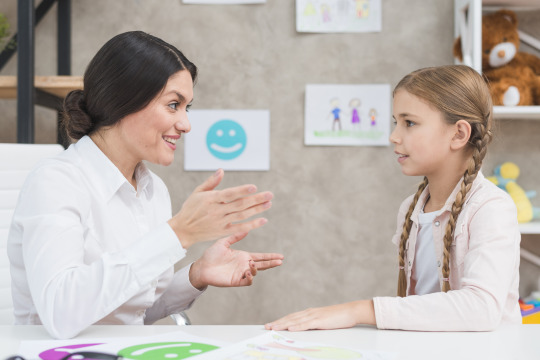
Introduction
Communication, a vital component of human contact, affects social relationships, academic achievement, and career advancement. Communication can be difficult, though, for those who suffer from apraxia, a speech disease marked by a lack of coordination in the motions necessary for speech. Speech therapy shows up as a ray of hope in these situations, providing specialised therapies to strengthen speech output and general communication abilities. Let us examine the critical function of speech therapy in the management of apraxia, highlighting its importance and efficacy.
Understanding Apraxia
Speaking Apraxia, also known as verbal apraxia or dyspraxia, is a neurological condition that impairs the capacity to organise and carry out the motions required for speaking. In contrast to other speech disorders like dysarthria or stuttering, the main cause of apraxia is a lack of motor planning, not muscular weakness or unintentional repetitions. People who have apraxia may find it difficult to accurately create sounds, syllables, and words, which can result in disorganised speech patterns and make it difficult for them to express their ideas clearly.
The Role of Speech Therapy
In order to address the particular difficulties that apraxia presents, speech therapy is essential. In order to address particular speech production issues and enhance general communication skills, speech-language pathologists (SLPs) collaborate with clients using a combination of evidence-based methods and tailored therapies. The following are some advantages of speech therapy for apraxia sufferers:
Assessment and Diagnosis
A thorough assessment performed by certified SLPs is the first step on the path to effective treatment. SLPs are able to accurately diagnose apraxia and determine the underlying variables that contribute to the disorder through the use of standardised testing, observation, and speech pattern analysis.
Targeted Intervention
Speaking therapists create individualised intervention plans based on a thorough understanding of each client's particular needs in order to address the particular difficulties related to apraxia. Oral motor coordination, phonological awareness, and articulatory precision exercises are a few possible examples of these.
Multimodal Approaches
To achieve maximum success, speech therapy for apraxia frequently combines a number of methods and approaches. PROMPT (Prompts for Restructuring Oral Muscular Phonetic Targets) therapy is one type of treatment that uses tactile signals to help with speech production, and melodic intonation therapy is another type of treatment that uses the musical aspects of speech to improve fluency.
Progress Monitoring
As treatment moves forward, SLPs continuously evaluate how the client is responding to intervention, modifying tactics and objectives as necessary to guarantee the best possible results. To monitor improvement and promote motivation, regular feedback and cooperation between the client, therapist, and support system are essential.
Functional Communication Training
Targeting speech production skills is just one aspect of speech treatment for apraxia; other tactics include improving functional communication abilities. AAC (augmentative and alternative communication) devices, sign language, or visual assistance to enhance spoken expression are examples of alternative communication modalities that may be used in this situation.
The Best Speech Therapy Center in Ajman
In Ajman, where access to high-quality speech therapy services can significantly impact individuals with apraxia, the presence of a reputable and dedicated speech therapy centre is invaluable. At the Best Speech Therapy Centre in Ajman, individuals with apraxia receive comprehensive, evidence-based interventions delivered by experienced speech-language pathologists. With a focus on personalised care and innovative approaches, this centre is committed to empowering clients to overcome communication barriers and thrive in their daily lives.
Conclusion
Speech apraxia presents particular difficulties that can greatly impair a person's capacity for efficient communication. With the assistance of proficient speech-language pathologists and customised intervention techniques, people with apraxia can achieve significant progress in enhancing their speech output and communication abilities in general. We can assist people with apraxia in realising their full communication potential and leading satisfying lives by acknowledging the critical role that speech therapy plays in treating the condition and fighting for access to specialised services like the best speech therapy centre in Ajman.
#rehabilitation center dubai#occupational therapy dubai#speech therapy center in ajman#best speech therapy center in ras al khaimah#best rehabilitation center in ajman
0 notes
Text
Unlocking Language: 4 Simple Strategies for Teaching Toddlers with Speech Therapy at Lifeway Rehabilitation Center
four simple yet powerful strategies that incorporate speech therapy principles to help your toddler blossom into a confident communicator.
Engage in Interactive Play: Interactive play is a fantastic way to promote language development in toddlers. Activities such as playing with dolls, building blocks, or even engaging in pretend play create opportunities for communication. At Lifeway Rehabilitation Center, experts emphasize the importance of using these activities to encourage language expression. Ask open-ended questions, describe what you're doing, and allow child to initiate conversations during playtime.
Read Aloud Every Day: Reading to toddler is a timeless and proven method for language development. Lifeway Rehabilitation Center encourages parents to make reading a daily habit. Choose colorful books with vibrant illustrations and simple sentences. Point to pictures, ask questions about the story, and encourage your child to repeat words. This not only enhances vocabulary but also nurtures a love for reading.
Create a Language-Rich Environment: Surrounding your toddler with a language-rich environment is essential for their speech development. Label everyday objects, talk about daily routines, and expose them to a variety of words. Lifeway Rehabilitation Center emphasizes the significance of repetition in building vocabulary. Repeat words, sing songs, and play rhyming games to reinforce language patterns.
Utilize Speech Therapy Techniques: Incorporating speech therapy techniques into daily interactions can significantly benefit toddlers with language delays. At Lifeway Rehabilitation Center, our experts recommend the use of gestures, signs, and visual aids to support verbal communication. For instance, teach your child basic sign language for essential words like "more," "please," and "thank you." These techniques enhance communication and provide additional avenues for expression.
Teaching language to toddlers is a rewarding journey that requires patience, consistency, and creativity. By incorporating these strategies, inspired by speech therapy principles, you can contribute to your child's language development. At Lifeway Rehabilitation Center,committed to supporting families on this journey, providing personalized care and expertise to help toddlers reach their full potential in communication. Remember, every interaction is an opportunity for growth, and with the right approach, you can lay a strong foundation for your child's language skills.
#best speech therapy center in ras al khaimah#rehabilitation center ajman#best rehabilitation center in dubai#best rehabilitation center in ajman#rehabilitation center dubai#speech therapy center in ajman
0 notes
Text
Nurturing Potential: Overcoming Developmental Delays with the Best Rehabilitation and Occupational Therapy Centers

Developmental delays can pose unique challenges for individuals and their families, affecting various aspects of life such as motor skills, communication, and social interactions. However, the journey to overcoming these delays is a path paved with hope and resilience
Understanding Developmental Delays: A person with developmental delays is unable to reach developmental milestones at the expected rate due to a variety of circumstances. These delays can manifest in areas such as speech and language, cognitive abilities, fine and gross motor skills, and socialization. Early identification and intervention are key in addressing developmental delays, providing individuals with the necessary support to reach their full potential.
The Role of Rehabilitation Centers: Rehabilitation centers play a pivotal role in addressing developmental delays by offering comprehensive and specialized programs. These centers employ a multidisciplinary approach, involving professionals such as physical therapists, speech therapists, and occupational therapists. The best rehabilitation centers are equipped with state-of-the-art facilities and a team of experienced professionals dedicated to tailoring interventions to the unique needs of each individual.
Occupational Therapy: A Cornerstone of Developmental Intervention: Occupational therapy is a crucial component of developmental intervention, focusing on enhancing an individual's ability to perform daily activities and participate fully in life. It is especially beneficial for those facing challenges in fine motor skills, sensory processing, and self-care. The best occupational therapy centers prioritize personalized treatment plans, fostering independence and empowering individuals to navigate the world around them.
Choosing the Right Center for Your Loved One: Selecting the best rehabilitation or occupational therapy center is a crucial decision for families navigating developmental delays. Consider factors such as the center's expertise, the qualifications of the staff, the range of services offered, and the success stories of individuals who have benefited from their programs.
#best speech therapy center in ras al khaimah#Best rehabilitation center in ajman#Rehabilitation center ajman
0 notes
Text
Best Occupational Therapy in ajman

How can we improve the activities of daily living for children
Fine and gross motor abilities, sensory processing difficulties, and other factors can all have an influence on how youngsters learn to care for themselves. An occupational therapist can assist youngsters learn to tie their shoes, clean their teeth, and feed themselves. OTs can also assist children who struggle with the sensations, taste, smells, and feel associated with doing or engaging in ADLs. Children, like anything else, learn as they grow, and an OT may assist parents in determining areas of need and what their kid should be doing based on their developmental stage. Get the best Occupational therapist in ajman for your child.
When there is a gap in abilities required to do these chores, Occupational Therapy (OT) can assist children and adults become more autonomous in ADLs. Occupational Therapy may assist people of all ages and abilities in breaking down these everyday chores and developing functional skills, as well as adapting the activity itself, so that people can be as independent as possible in these critical activities we undertake every day.
Occupational therapists are focused to dealing with challenges in daily living tasks such as self-feeding, clothing, grooming, bathing, and toileting, as well as work performance. Occupational therapists are often focused in arm and hand usage, eye-hand coordination, posture as it pertains to arm stability, and the intellectual knowledge required to complete motor tasks. Occupational therapists frequently collaborate with physical therapists, who are more concerned with mobility and postural issues, particularly with regard to leg and trunk function. Occupational therapy's involvement in aiding children and young people with A-T is continuing, since time naturally offers new interests and demands to typically developing children, while A-T brings new burdens of neurologic disability. Therapy can include proposing assistive equipment, modifying the surroundings or adjusting activities to make them easier to complete, advising or aiding with therapeutic exercises, or assisting in the development of new and more suitable objectives. The top Rehabilitation Center in Ajman have qualified therapists and years of experience, your child will get all the support they need to overcome those challenges.
#Best rehabilitation center in ajman#Occupational therapist in ajman#Rehabilitation Center in Ajman#Occupational Therapy in ajman#Rehabilitation center ajman
0 notes
Text
Occupational Therapy in ajman
why occupational therapy can be beneficial for children with handwriting difficulties
Handwriting difficulties can be a common issue for children, and can impact their ability to complete schoolwork and other tasks. Occupational therapy can be an effective treatment for these difficulties, helping children improve their fine motor skills, strengthen the muscles needed for writing, improve hand-eye coordination, and learn proper pencil grip. It can also provide adaptive equipment and strategies to support children with these challenges. Occupational therapy can be beneficial for children with handwriting difficulties for a number of reasons. Here are some of the ways that occupational therapy can help:
Improving fine motor skills: Occupational therapists can work with children to improve their fine motor skills, which are the skills needed for precise movements of the fingers, hands, and wrists. These skills are important for writing, as they help with forming letters and controlling the pencil or pen.
Strengthening the muscles needed for writing: Occupational therapists can also help children strengthen the muscles in their hands, wrists, and forearms, which are important for writing. This can be done through a variety of exercises and activities that target these muscles.
Improving hand-eye coordination: Occupational therapists can work with children to improve their hand-eye coordination, which is important for writing. This can involve activities such as catching and throwing a ball, drawing lines and shapes, or using puzzles and games.
Teaching correct pencil grip: Occupational therapists can help children learn how to hold a pencil correctly, which can improve their handwriting. This may involve using special grips or other tools to help children develop a proper pencil grip.
Providing adaptive equipment: Occupational therapists may also recommend or provide adaptive equipment such as special pencils or writing tools, slant boards, or other devices to help children with handwriting difficulties.
Overall, occupational therapy can be an effective way to help children with handwriting difficulties improve their fine motor skills, strengthen the muscles needed for writing, improve hand-eye coordination, and learn proper pencil grip. It can also provide adaptive equipment and strategies to help children with these challenges.
If you are seeking occupational therapy services in Ras Al Khaimah or Sharjah, there are several reputable rehabilitation centers that can provide the support and guidance your child needs. One such center in Ras Al Khaimah is Lifeway Rehabiltiation Center, which is known for its state-of-the-art facilities and experienced therapists. In Sharjah, the best rehabilitation center for occupational therapy is Lifeway Rehabiltiation Center, which is staffed by highly trained and experienced therapists who are dedicated to helping children with handwriting difficulties and a range of other conditions.
Occupational therapy can be an invaluable resource for children with handwriting difficulties, helping them improve their skills and achieve their goals. If you are considering occupational therapy for your child, be sure to reach out to a reputable Rehabilitation Centre in uae or Sharjah for more information and assistance.
#Occupational therapist in ajman#Best rehabilitation center in ajman#Rehabilitation center ajman#Rehabilitation Center in Ajman#Occupational Therapy ajman#Best rehabilitation center in Sharjah#Best rehabilitation center in Ras Al khaimah
0 notes